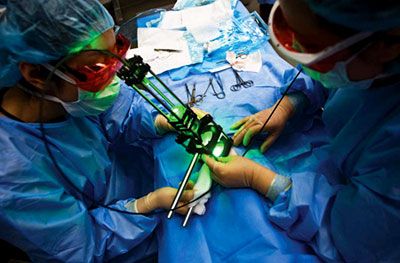Laser Tech
Jun 20, 2019 • 11 views
Laser is recognized as one of the top technological achievements of 20th century and there are few areas in technolgy that are not influenced by it. It plays an important role in medicine, industry, and entertainment has resulted in fiber-optic communication, CDs, CD-ROMs, and DVDs. Without lasers there would be no supermarket bar code readers, certain life-saving cancer treatments, or precise navigation techniques for commercial aircraft. Laser makes a high intensity and extremel directional beam which has a narrow frequency range. Lasers are more used as a strong electromagnetic beam than a light beam.
Laser Amplification by Stimulated Emission of Radiation(LASER) and refers to devices that generate or amplify light through that principle. Lasers are used whenever a directed, sometimes very intense, beam of monochromatic light is required. Lasers may operate in the continous wave mode or in the pulsed mode, in which they store energy and suddenly release a burst of photons. Laser devices use light to store, transfer, or print images and text. They are also used in a wide range of other applications.
Applications of LASERS increased rapidly. The unique properties of laser beams allow them to be focused into tiny spots, travel along distances without diverging, and be turned on and off rapidly, making them ideal for many uses, including rapid transmission of digital information. In the 90s lasers were used regularly in scientific research, military weapons, medical diagnosis and surgery, communications, air quality analysis, surveying and seismology, barcode scanners, CD and video disc scanners, printers, welding, etching, and micromachining.

Uses of Laser technology
Barcode Readers
Before barcodes, inventories had to be recorded manually or in a non-standardized way across industries and even within the same warehouse. The idea of a universal means of identifying an item isn’t new, but until the development of laser barcode readers, there was no way to process these codes automatically.
LiDAR
Laser range-finding technology itself is a remarkable advance, but one of its most remarkable applications is in LiDAR, a technology that is essentially RADAR except with light. The applications of LiDAR are numerous and have given us everything from the laser rangefinder you can find in your local hardware store to recording the distance to the Moon.
Laser Cutters
Metal cutting has been an important driver of innovation since metal was first used by humans millennia ago. Lasers have increased the precision of these cuts considerably and have become an industry standard way of cutting complex shapes and pieces from metal sheets in a way that grinders and other mechanical cutters can’t easily match.
Laser Welding
Welding has been a crucial industrial technique for centuries. With the advent of laser-welding, precise, controlled joints could be made with different metals that were physically impossible before and was instrumental in developing automated assembly lines that have revolutionized manufacturing around the world.
Optical Storage
CDs, DVDs, and Blu-Ray Discs have increased the single unit storage capacity by orders of magnitude. Modeled on old gramophones and vinyl records, the optical disc provides much of the mass storage we use in computers today due to its low cost, higher capacities, and long-term reliability.
Ultra-Fast Photography
The advance in this technology came when laser pulses are used to flash illuminate the subject in rapid sequence, creating a strobing effect that can appear to stop the subject entirely at every frame of the shot. This technique leads to much higher resolution imaging of an incredibly fast moving object than otherwise possible.
